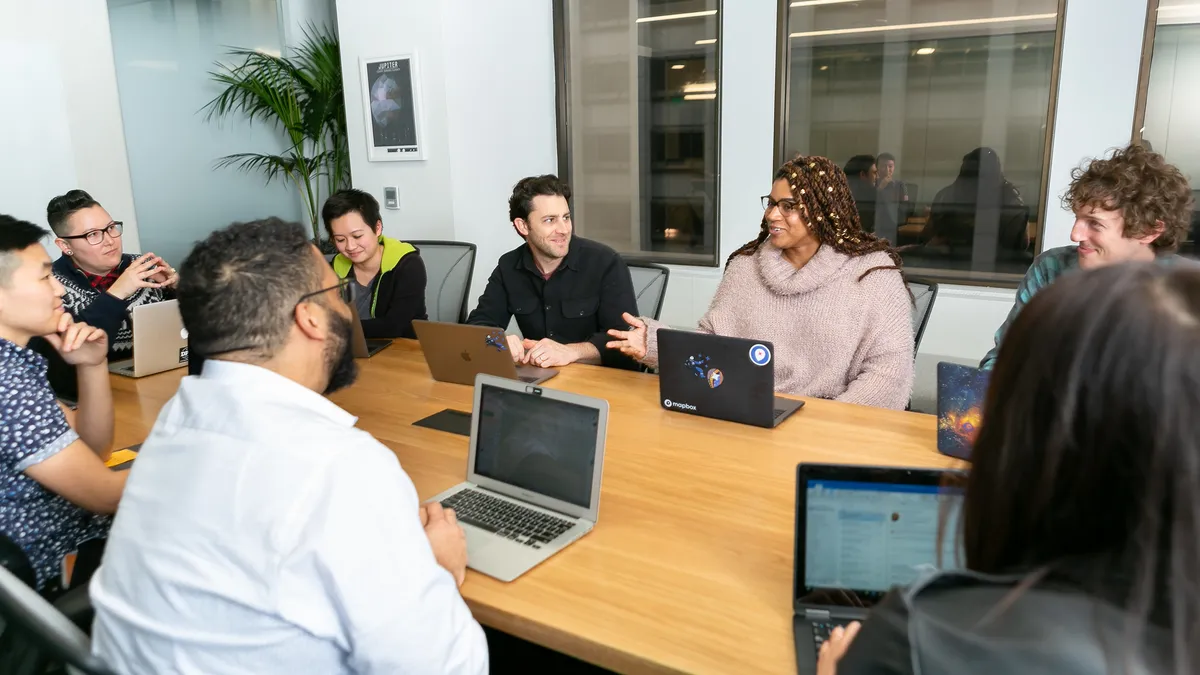When the pandemic hit, CFO Laurie Krebs, with other function leaders at open-source operating system company Red Hat, created a war room to respond to customers' deferral requests and other payment concessions.
"Our premier product is an operating system, so, [for that to] go dark is not an option for a lot of customers," Krebs said.
Rather than create a single playbook, the team approached each request on a case-by-case basis. "To some people, cash is important," she said. "To other people, holding onto their subscription is important."
The war room's collaborative approach, in which representatives from sales, sales operations, technical accounting and business finance weighed requests as a team, defines how the company approaches all of its policymaking, said Krebs, who took over as CFO last year after serving as vice president of global tax.
"We're an open-source software provider, and that is how our culture is," she said. "Very open and transparent."
Remote-work policy
The company assembled a war room-like team in March to hammer out a remote-work policy and, later, a return-to-office policy. "It's been trial and error," Krebs said.
The company maintains 137 offices in 45 countries, so as governments issued stay-at-home mandates at different times and with different levels of restrictions, devising a remote-work policy was complicated. "In certain countries, it was illegal to move at all," Krebs recalled.
The team defaulted to remote work for every office, adding a process for approving exceptions, if it could be done safely, for technical specialists and others who need to be on-site. "We do have a services business that does need to support the customer at the customer site," she said.
Support tools
About a quarter of Red Hat's workforce was already remote, so the company had the tools in place for making a relatively smooth transition for everyone else. "We were ahead of the curve," she said.
To help associates who needed an equipment upgrade or something new to make the transition work, the team adopted a policy of giving every employee a stipend of $250 for purchasing what they need.
"This wasn't just office equipment or something for you to buy," she said. "It could help you get more bandwidth or get a tutor to help your kid. However you see best to use it."
The $250 in purchasing power equivalent meant different amounts in different countries, adjusted for currency value, and structured as a pre-tax benefit. "We grossed them up so they truly got that amount of spend," she said.
New growth path
Krebs joined Red Hat in 2016 after nine years at LED-lighting company Cree and, before that, Nortel Networks.
She took over as CFO just after the company was acquired by IBM. Until the pandemic, she had been focusing on helping the company meet its growth expectations.
"It was pretty much heads down trying to find our way … on the growth IBM was expecting, based on their paying $34 billion for our company," she said. "We're a growth company and expected to continue to grow."
The company is now on a different path, based on a mix of impacts to its customers. "We serve all kinds of customers across industries … like hospitality, airlines, etc., that are more impacted. There are also industries like telco that are going gangbusters; their technology is what is needed by everybody at this time, so we … might see some profits here, and others there."
Virtual boost
If there's a silver lining to the pandemic, it's the way it's accelerating the move to virtual environments for sales and meetings. The company holds a big sales event every year, a customer summit, and it expected this year to be its biggest ever, drawing about 10,000 people to San Francisco. The virtual event it was replaced with ended up being a bigger success than expected, and could permanently change the future approach.
"We opened it up to everyone and we had 80,000 attendees," Krebs said. "We said, 'Hey, wait a minute; this is even better.'"
The remote-work team is now planning how it will bring associates back to the office. Engineers built a dashboard to sift through data from all of the company's locations to help the team determine which offices should reopen, when, and by how much.
"It's kind of a neat dashboard, like a speedometer … so once a location has met the criteria, the dial turns to green, and we start the process of going from our default remote [mode] to opening in phase one on a limited basis," she said.
Under a phase one opening, the company will allow a quarter of the staff to return to the office. The team developed a survey to help identify who goes and who stays.
"It asks whether it's important to you to go back and whether you have a business or a personal need to go back," she said. "Someone could say, 'Hey, I absolutely need to go back to the office,' no questions asked."
When the survey responses were returned, only about 10% of associates said it was important for them to go back.
"We met our associates half way and so far it's been working well," she said.






















